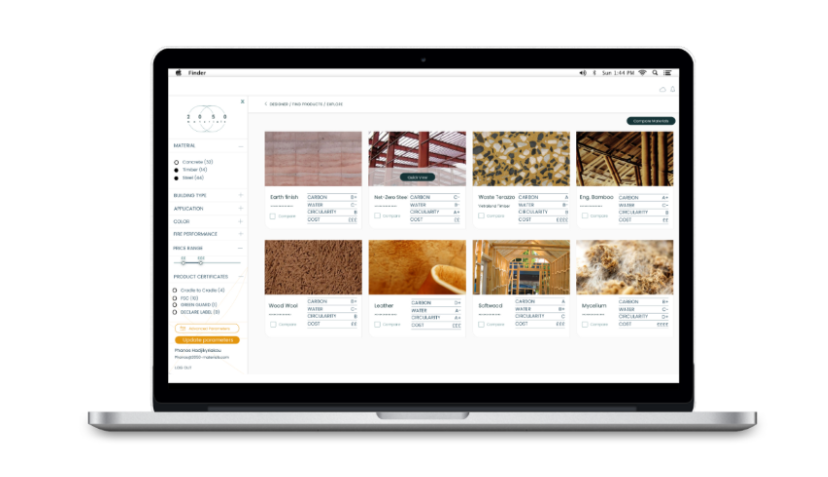
About 2050 Materials
- Founders: Phanos Hadjikyriakou, Stephanos Stephanov
- Founded in: 2021
- Employees: 4
- Money raised: Currently raising a pre-seed round from a group of angel investors.
- Ultimate goal: 2050 Materials offers a digital information and research platform for the construction industry to explore, compare and source wonderful and sustainable building materials.
A wealth of information on sustainable building materials should help cut down on the high CO2 emissions that are produced in the construction industry. Phanos Hadjikyriakou, founder of the Swiss company 2050 Materials, talks to us about this.
What does 2050 Materials do exactly?
“2050 Materials is an online platform where architects, contractors and engineers can learn more about sustainable building materials in an accessible way. This is where they can find all the information in one place. They can also do their own research into the respective materials in order to raise their awareness of sustainable building materials. This way, they can compare different materials to see which are the most sustainable and perform the best, and get in touch with the producers of the materials to request quotes or order products, for instance. So, we have developed a large database of information, whereby we are focusing on the whole of Europe. The platform is open to everyone; users can take out a monthly subscription to access all the tools.”
Also interesting: Sustainable stand-up paddle boards made from scrapped rotor blades

What problem are you solving?
“The construction industry is currently responsible for a staggering 39 percent of all global CO2 emissions, and as much as 50 percent of global use of resources. With international agreements in place to reduce CO2 emissions, the construction industry is obviously facing a major challenge. The problem is not that architects and contractors lack the will to become more sustainable, but rather that it can be extremely time-consuming to research which materials are the most sustainable, whether they are suitable for a specific building project and how you can procure them. Because of this lack of clarity, people still often resort to materials that are not good for the climate and the environment. We are trying to drastically reduce the time and effort it takes to do research into sustainable construction by creating transparency. We believe that this transparency will ultimately lead to a sustainable future for the construction industry.”
What kind of information do you provide specifically?
“2050 Materials offers a wide range of product information on sustainable building materials. The bulk of that information comes from publicly available sources, which we have bundled together on one convenient platform. We also offer producers of building materials the opportunity to register their own products, although, of course, we first check whether these products are really worthy of a ‘sustainable’ label. So, it suddenly becomes incredibly easy to find out everything about materials made from waste products, for example. Or new materials such as mycelium, or more traditional materials that have been produced in sustainable ways. Our partners have indicated that they can reduce their CO2 emissions by up to 20 percent as a result.”
What challenges are you running into?
“For the time being, we are still in the beta phase where we are working with architects and contractors to see how 2050 Materials can be incorporated into their practices in the most effective way possible. This means that the amount of data is not nearly as big as it potentially can be. That is why we hope to attract more interested parties in the near future, although it is still a bit of a chicken and egg story. For architects, the platform is only interesting if there are a lot of producers on it, and vice versa. That problem has become significantly less of an issue lately, though. Ultimately, we hope to make the most extensive, user-friendly platform possible that will enable us to maximize our climate impact.”


